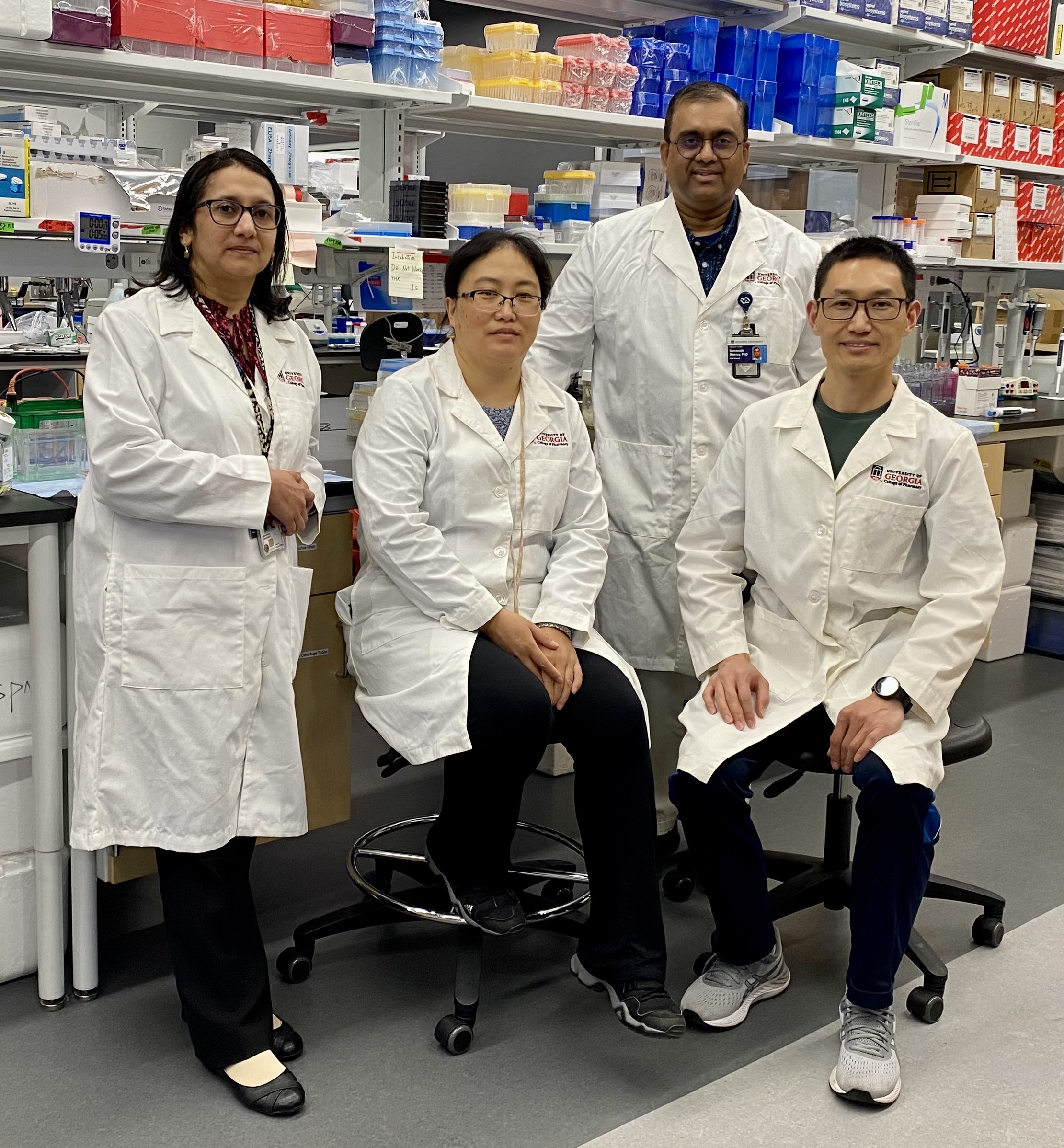New research—published this month in the journal Biomedicine & Pharmacotherapy and championed by study leads Dr. Somanath Shenoy and Dr. Priya Narayanan of the University of Georgia College of Pharmacy—identifies triciribine as a promising therapeutic for the treatment of certain types of eye disorders that can be caused by diabetes.
In the United States, an estimated 4.2 million adults have these diabetes-caused eye disorders, which are the leading cause of permanent vision loss in developed countries. For patients with diabetes, elevated blood sugar levels damage the blood vessels in the back of the eye, and the body tries to compensate for the injury by rapidly growing new blood vessels—a process called neovascularization. These new blood vessels, however, lack strength and structure, and they often end up leaking their contents into the eye, causing even more damage. Thus, what begins as the body’s attempt at correcting damage—ultimately ends up exacerbating the very damage that spurred the repair process in the first place. It’s a vicious cycle that, in as many as 10% of all diabetes patients, leads to vision loss. As the number of patients with diabetes is projected to double by 2060, an effective, safe, and affordable treatment for this type of eye disorder is needed.
“There’s a challenge in developing good therapeutics for these disorders,” said Dr. Shenoy, a professor at the College’s extended campus in Augusta. “Allowing the neovascularization processes to run rampant and go unchecked leads to disease progression but attempts to completely stop the process can be just as dangerous.” Previous anti-neovascularization drug candidates have tried to reverse the harmful processes by completely blunting the activity of Akt, a biomolecule that normally is involved in controlling neovascularization but is uncontrolled in these eye conditions. While seemingly promising, this approach of completely “turning off” Akt may damage other eye cells in the long term since some level of Akt activity is required for healthy eye functioning. Thus, what is needed is a “Goldilocks” solution – a medicine that is neither too inhibiting nor too activating and instead finds the level of suppression that is “just right.”
Enter triciribine, a small molecule drug that only partially inhibits the Akt molecule behind neovascularization. Shenoy, Narayanan, and their research team found that, when administered to mice with similar eye disorders, a perfect balance is struck between decreasing inflammation and the neovascularization processes without completing shutting down Akt activity and the network of blood vessels required for normal eye function. Triciribine demonstrated strong protective effects by decreasing the leakiness of blood vessels in the eye, slowing neovascularization, improving recovery of the eye, easing inflammation, and reducing the activation of other cells in the eye that can lead to injury. As opposed to current therapeutics which may cause long-term adverse side effects to the eye, triciribine use demonstrated no damaging changes to either the structure or function of the back layer of the eye.
Collectively, these findings suggest that triciribine could be an effective and safe therapeutic for the treatment of other certain types of eye disorders. “While further pre-clinical research is necessary to learn how triciribine works at the molecular level and how to best administer the medication to the eye, the drug is already being studied in clinical trials for other disease states, including certain cancers,” added Narayanan. “In those studies, triciribine has shown favorable safety profiles, indicating that bringing the medication to market could be relatively straightforward.”
For these UGA researchers, this paper is another stellar achievement in their already prolific and accomplished careers. Shenoy, a vascular biology expert, has researched Akt and retinal vasculature throughout his career. Recently named the College’s Undergraduate/Graduate/Certificate Teacher of the Year and the Kenneth L. Waters Pharmacy Professorship recipient, Shenoy has a storied history of pursuing approaches that translate scientific discoveries into commercial applications, as exemplified by this recent paper. Narayanan, an expert in diabetic retinopathy, has received numerous prestigious grants for her cutting-edge research related to retinal disorders. Her interest in the area began during her post-doctoral training when she was first introduced to the significant gap between retinopathy disease prevalence and treatment availability. Her personal experiences with family members affected by diabetes and vision loss continue to motivate her work.
Other members of the Shenoy-Narayanan research team in Augusta include Fang Liu, research professional; Shengshuai Shan, post-doctoral associate; Edith Ford, PharmD graduate, and their collaborator Ruth Caldwell, professor at Augusta University.
This story was written by Bryan Gomez, a P2, who is a research writer in the Marketing & Communications Office at the College of Pharmacy.


